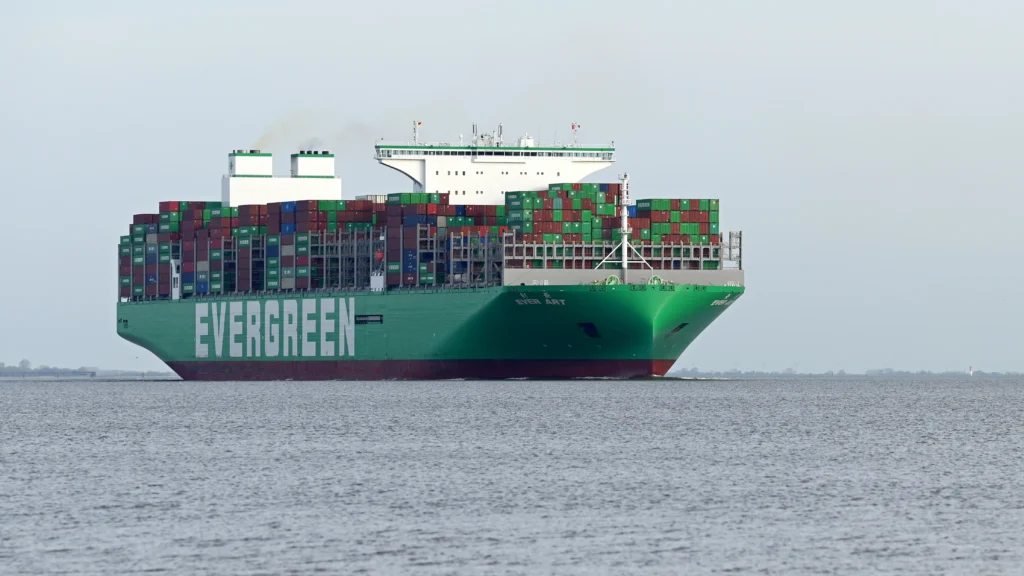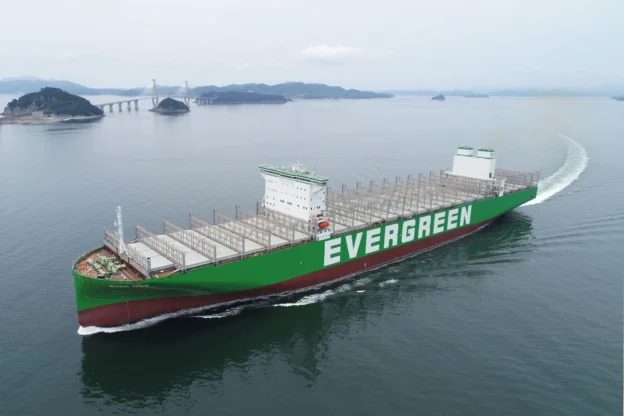Samsung Heavy Industries (SHI) has achieved a landmark demonstration of its artificial intelligence-based autonomous navigation system by completing a transpacific crossing without crew intervention. The system, known as Samsung Autonomous Ship (SAS), was installed on a 15,000 TEU container ship operated by Evergreen Marine and sailed from Oakland, USA, to Kaohsiung, Taiwan, from August 25 to September 6.
A technological alliance on the move
The test was carried out on the container vessel Ever Max one of Evergreen’s largest vessels. Throughout the more than 10,000 km voyage, the SAS system kept analyzing the sea state, weather conditions and voyage route every three hours, executing a total of 104 optimal orientations and 224 automatic control actions, without the need for human intervention.
The system maintained a constant economic speed, ensuring on-time arrival of the vessel and a significant reduction in fuel consumption.
What is the SAS system and how does it work?
Developed by Samsung Heavy Industries since 2019, the Samsung Autonomous Ship system is a system that uses. artificial intelligence to automate navigation and optimize ship routes. It integrates existing navigation equipment, such as radars, GPS, ECDIS (Electronic Chart Display and Information System), with trajectory control systems and cameras, to monitor the environment, day and night.
It is also capable of assessing collision risks around the vessel and automatically controlling the rudders and engine automatically to avoid collisions. The system can be easily installed in a ship’s system along with other existing software.

Results with logistical impact
The ability to optimize routing and speed in real time translates directly into lower operating costs for shipping lines and reduced emissions, a goal for the entire industry today. a goal for the industry as a whole today.
Lee Dong-yeon, vice president and director of SHI’s Shipbuilding and Marine Research Institute, said:
SAS has evolved from an autonomous collision avoidance navigation assistance system to a system capable of maintaining an economical speed and arriving on time on its own. It will contribute to the global shipping logistics industry as an environmentally friendly measure to reduce fuel consumption.
Lee Dong-yeon, vice president and director of SHI’s Shipbuilding and Marine Research Institute.
The future of intelligent navigation
Currently, the world’s shipyards, mainly Korean shipyards, are competing to integrate artificial intelligence on a commercial scale, so SHI will continue its research in autonomous navigation technology together with Evergreen Marine to refine the energy efficiency of the system.
Source: Samsung Heavy Industries (SHI).

